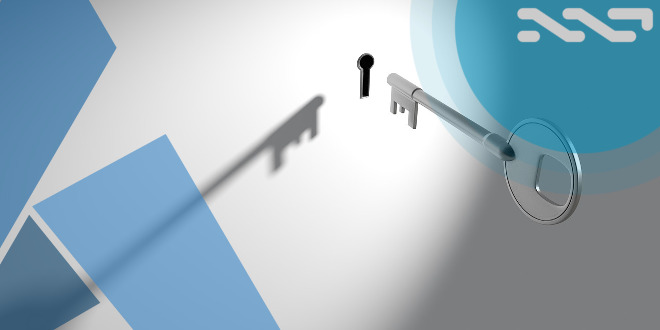Do you remember, back in the day, the first time you got your mind blown? I remember fondly how that happened to me with Nxt. That blockchain bastard repeatedly blew my mind – sometimes several times a week as it implemented feature upon feature at such a frantic pace. As such, I became a part of the embracing high-level community of Nxters and eventually surmounted the steep learning curve. It was totally worth it but afterward, I became hard to impress.
Released today, a brand new Ardor testnet finally made my brain cells feel a tiny bit explosive again, and it feels great! Not just a tiny bit, actually. The client that lands today is blockchain 2.0 evolution at its finest. Let the popular experts, and all the great blockchain visionaries do their talks. Jelurida just wrote it in code. Again. Let others continue to talk about TPS, ignoring scalability and security, we covered it already. And if you don’t know about Nxt, you should read up.
Ardor 2.0.4e
The Nxt and Ardor core dev team at Jelurida presents to you: New asset control features, multiphased smart transactions, a new API for creating regulated tokens on the decentralized Asset Exchange, and a transaction type that allows asset issuers to increase the number of asset shares in existence. All of this is an addition to all the existing core features and API.
This new Ardor testnet release resets the existing testnet and publishes a new Genesis block that tests the transition of data from Nxt to Ardor, based on a snapshot made of Nxt’s mainnet at block 1558000, shortly after the last JLRDA (IGNIS) exchange offer expired.
The testnet Genesis block timestamp has been set to 00:00 (midnight) UTC time
on Monday, Nov 6th, in order to allow time for users to setup nodes check their balances, and start forging.
From the Nxt blockchain has been transferred the following:
- Accounts (public keys)
- Account balances
- IGNIS balances are based on NXT balances, divided by 2, plus JLRDA asset balances. Each of those has been additionally divided by 2, in order to allocate 50% of the testnet coins to developer accounts for testing purposes. There has been a 10% BITSWIFT asset sharedrop distributed proportionately to all IGNIS shareholders.
- Account info (name and description)
- Account properties
- Account control settings for account control by whitelist with no minimum balance.
- Account aliases transferred to the IGNIS child chain.
- Janus, JanusXT, and ComJNSXT assets have been imported.
- Monetary system currencies have been imported to the IGNIS child chain.
- Only currency code and name. It will be up to each currency issuer to re-issue the currency with the appropriate properties and re-distribute it to users.
Lior Yaffe kindly asks all of us to check our accounts on Ardor and make sure everything has happened correctly:
If you are only interested in checking your balances head to the Jelurida public node , login using your existing NXT Mainnet account id (no need to login using passphrase) and check your ARDR, IGNIS and BitSwift balances. In addition, check your Janus asset balances, aliases, account properties, currencies, account control and all other entities migrated from the NXT Mainnet according to the changelog.
When you check, be aware that your IGNIS and ARDR holdings have been divided by 2 in this testnet release, so 50% of the tokens can be allocated to dev accounts for testing purposes.
Read all details here.
This was to be expected. Massive work, yes, all as promised and fair for a call to shift from one platform to the N(e)XT, Ardor. Pun intended. There are API changes too, and new API, coders please (you must!) check the change-log.
What made my brain cells begin to feel explosive again then?
New features
Yes, the new features. Nxters run. Run out there and share it with the world!
The change-log for Ardor 2.0.4e presents the following new transaction types – add to them all that the Nxt blockchain’s smart transactions and Ardor’s globally scalable, energy efficient child chain platform design can do, and you will see clearly the size of this gamechanger. This is what the release implements:

Asset control
Allows an asset issuer to control her assets. That’s right. As the issuer you decide who can buy and sell them; a small group of selected people, only KYC verified accounts, perhaps. Or you could send non-transferrable assets to a board of holders and give them voting rights over the asset. How about that. Read it again and let it sink in – with this release you, the issuer, will get complete asset control.
No, it’s not the end of a free market. Ignis is free. It is a new opening that allows all new as well as old running businesses to shift their old backend to Ardor and Ignis and receive all the benefits of the blockchain as a business backend, consumer front-end, and even get it cheaply.
Example:
- Have an ICO/crowdfunding on Ignis
Upload contracts and legal documents to the data cloud, time-stamped, hashed, let the KYC compliant accounts of your business partners or angels digitally sign the agreements, this will be documented on the blockchain as well. - Issue your asset tokens
- Decide which rights you want to give to your asset holders, and to your market.
- Distribute assets, each with the rights attached that you assigned to them. Watch them be traded.
Selected (or all) asset holders can have voting rights. You can pay dividends in any token on the platform; IGNIS, another child chain coin, an € pegged coin, that can be withdrawn with your VISA/Mastercard or just sit in your bank account. Or in other assets, representing bonus points, tickets, whatever fits your business plan. You could even create games with this. It is here.
We welcome this Java code, the Asset Control feature, as one of the best newest addition to the already existing API.
Composite Phasing
Introduces AND, OR, and NOT to Nxt’s Phased Transactions. This, combined with the new Asset Control feature, adds whitelist control over asset holder accounts, you can choose, for example, which asset holders should have the opportunity to vote or even control an account by vote. Even control the whitelist of new accounts. Do you see the better DAO coming?
It also allows for example combining the existing by hash or by transaction approval models with by whitelist, by balance, etc, approvals, which enables doing atomic coupling of transactions (including cross-blockchain) even for multisignature accounts, or with assets subject to Asset Control.
I couldn’t say it better.
The NOT operator allows for dead-man-switch type conditions, where a transaction is executed only if some condition (e.g. revealing a secret) is NOT satisfied.
Asset share increase
With this new smart transaction type, asset issuers can increase the number of assets in existence. Print new money?!!
The new shares are allocated to the asset issuer account, but can then be distributed to shareholders using a separate dividend payment transaction. This allows corporate actions such as capital increases or stock splits to be performed.
Be careful, like we all learned in Economics 101, increasing the supply of money will decrease the value. Take care not to dilute your asset into nothingness.
By-Property phasing
First, if you don’t know Nxt’s feature “Account Properties”, I should fill you in: Account Properties is a Nxt feature that adds the ability to permanently ‘tag’ any account on the blockchain with a small amount of data, like meta-information. Tags can also be deleted by the tagger.
Let’s see what By-Property phasing is:
The new by-property approval model allows the transaction execution to be made conditional on the sender account or the recipient account having a specific account property set. If this property is set, the transaction will be executed immediately, else, a second check whether the property is set is performed at the finish height defined. This allows, for example, enforcing KYC by asset issuers, who can define in their Asset Control settings that only KYC-verified accounts, labelled with a predefined account property by a trusted authority (or the asset issuer itself), to perform transactions with their assets.
So with this feature, the blockchain market is regulated.
With this, you can, for example, in the near future, issue an asset on any Ardor child chain, trade it on any child chain, but enforce/be enforced to only let KYC approved accounts trade it on the market. Or choose by country. Or any group. With Ignis, asset issuers and traders can choose whether or not to trade on the regulated market, but we all know: Regulation will be. The new By-Property phasing API makes it not just possible but also easy and cost-effective to develop as a user-friendly service, and yeah, remember, the main purpose for Nxt 2.0, Ardor, was actually to make it globally scalable.
Where does this leave us? Accounts can be tagged by 3rd party KYC service providers or, even better, by governments, may they ever choose to set official ID on accounts and begin using the benefits of the blockchain. Don’t get me started. Secure us, our medical records, money, ID – let us be secured by cryptography. Jelurida’s code does it for them. Give us voting rounds that cannot be interfered with as the result is public, and votes have already been counted by code, see the graph. It’s on blockchain, but energy efficient, secured by nodes all over the world, and while we’re at it – possible. And see, Ardor has, as another first, a solution to the blockchain bloat problem running in production. The first and most tested globally scalable PoS Platform. It’s here, get started.
Sure I am excited. I’m a Nxter. Aren’t you?
Come on, try it!
For newcomers, it may seem weird that scammers and developers collect millions and millions of dollars worth of ETH or BTC in ICO’s, selling their whitepaper only, describing smart contracts they want to invent, code, test, execute, and need us to trust, when old Nxt Cryptocurrency 2.0 already has the functionality that most of them seek. It’s weird that what most of all of these devs and their investors are trying to achieve already exists on Nxt, that now gets further ahead with the scalable and even more beneficent and featureful public Ardor Platform. Yes, it IS weird, that Nxt has been under the radar and ignored by, for example, the larger Bitcoin-paid media for so many years.
The Nxt core devs, Jelurida, has split Nxt into IGNIS, the transactional token of Ignis, the first and unrestricted full featured child chain on Ardor; the mother blockchain that forges all Ignis’ transactions and will give birth to a lot more and take care of all her children (child chains), as well as make sure they keep communicating with each other. This is Ardor. With Nxt being a blockchain 2.0 platform, should Ardor be called blockchain 3.0? Nxt 4.0? Who cares. If you’re just a little familiar with Bitcoin, blockchains and smart transactions, you will realize that you want to test this release.
If you are installing on top of a previous Ardor release delete first the nxt_test_db folder from C:\Users\<username>\AppData\Roaming\Ardor on Windows, ~/.ardor on Mac and the Ardor installation folder on Linux. If you don’t do that you’ll be left on a fork.
Follow the development closely and take part in the community. Even without the awesome potential that awaits us with this momentous release, it’s always mindblowing development.
